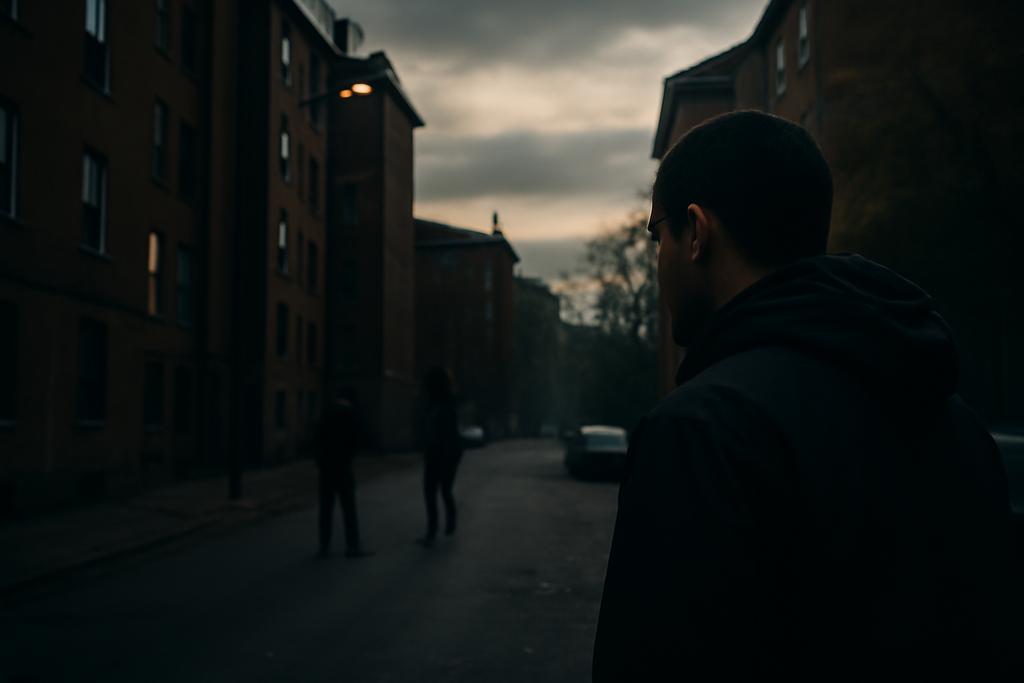Invisible Borders in the Underworld
We tend to think of property rights as a hallmark of civilization—legal titles, deeds, and courts that keep disputes from turning violent. But what happens when the law steps aside? In the shadowy world of organized crime, especially in urban drug markets, property rights don’t vanish; they morph into informal, often brutal, systems of control. A new study from researchers at the University of Cambridge, Australian Catholic University, and Italian universities peels back the curtain on how criminal groups carve up city neighborhoods, revealing a surprising pattern: the most lucrative drug-selling areas are the most violent, yet paradoxically, it’s the less profitable zones where gangs hold the tightest grip.
Territory, Turf, and the Business of Crime
Organized crime groups (OCGs) are not just chaotic gangs running amok; they are rational actors seeking to maximize profits in a risky, lawless environment. The study, led by Paolo Campana and colleagues, analyzed crime data from Merseyside, U.K.—a region with a dense network of criminal groups and a rich tapestry of urban neighborhoods. By mapping drug offenses and violent incidents linked to these groups, the researchers uncovered a nuanced geography of crime: high-revenue drug markets attract many competing gangs and frequent violent clashes, while medium- and low-revenue areas tend to be controlled more peacefully by single groups.
This dynamic suggests that criminal property rights—informal rules about who controls what—are more stable where the stakes are moderate. In the most profitable areas, the prize is so tempting that multiple groups contest it fiercely, leading to bursts of violence and unstable control. Meanwhile, in less lucrative neighborhoods, gangs can maintain a monopoly, reducing conflict and, ironically, violence.
Modeling the Underworld as a Strategic Game
To make sense of these patterns, the team developed a game-theoretic model treating OCGs like players in a high-stakes chess match. Each group decides where to operate based on expected profits and the likelihood of encountering rivals. If a gang tries to muscle into a territory already controlled by another, it risks costly conflict and may be forced to retreat empty-handed.
The model reveals a delicate balance: when gangs are very active and frequently move into new areas, they tend to specialize, each staking out a distinct territory and minimizing violence. But when activity slows, competition intensifies in the most valuable areas, sparking violent confrontations. This interplay explains why violence clusters in high-revenue zones while medium-value areas enjoy relative peace under established control.
Why This Matters for Policy and Policing
These findings challenge conventional wisdom about fighting organized crime. Police often focus on violence hotspots, but this study warns that targeting only the most violent areas might miss the bigger picture. Middle-revenue neighborhoods, though quieter, can harbor entrenched criminal governance that quietly undermines communities.
Moreover, interventions that reduce gang activity indiscriminately may backfire. The model predicts that if police pressure lowers the frequency of gang movements too much, violence can actually spike in the most lucrative areas as groups scramble to claim or reclaim territory. This unintended consequence highlights the complexity of urban crime ecosystems and the need for nuanced strategies.
Shadow Institutions and the Paradox of Stability
One of the most striking insights is that criminal property rights act like “shadow institutions.” Just as formal property rights stabilize markets and reduce conflict in legal economies, these informal rules among gangs can suppress violence by establishing clear territorial boundaries. When these boundaries hold, communities might experience less overt violence, even if criminal activity persists.
This paradox forces us to rethink the nature of order and disorder in cities. Crime isn’t just chaos; it’s a form of governance, albeit a harmful one. Disrupting this order without a plan for what replaces it risks plunging neighborhoods into turf wars and instability.
Looking Ahead: A Call for Smarter Interventions
The research from Merseyside offers a powerful lens for understanding the spatial and strategic logic of organized crime. It underscores the importance of considering how criminal groups negotiate control and how violence is both a symptom and a tool of territorial competition.
For policymakers and law enforcement, the message is clear: interventions must be carefully calibrated. Blanket crackdowns might inadvertently fuel violence in the most vulnerable areas. Instead, strategies that recognize the role of criminal property rights and aim to dismantle these shadow institutions thoughtfully could pave the way for more lasting peace.
In the end, the battle for urban turf is not just about drugs or money; it’s about control, order, and the fragile balance between peace and violence in the city’s underbelly. Understanding this balance is the first step toward reclaiming neighborhoods from the grip of organized crime.










